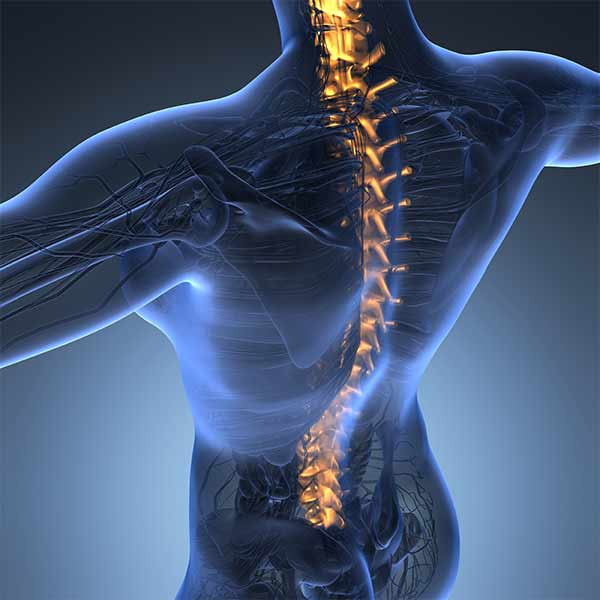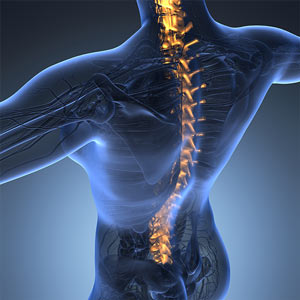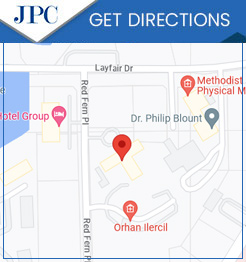Radiofrequency Ablation for Low Back Pain in Flowood, MS
Dr. J. Edwin Dodd offers radiofrequency ablation to treat the discomfort of various painful conditions. This non-surgical procedure helps to treat a wide range of comprehensive health issues, such as whiplash, spinal arthritis, complex regional pain syndrome, and others. Radiofrequency ablation can provide long-term relief from chronic pain. For more information, contact us or schedule an appointment online We are conveniently located at 1 Layfair Drive, Suite 400 Flowood, MS 39232.


Table of Contents:
How long does radiofrequency ablation on your back last?
What is radiofrequency ablation (RFA)?
Why is radiofrequency ablation (RFA) done?
What conditions can be treated with radiofrequency ablation?
How does radiofrequency ablation work?
There is a wide range pain relief available from radiofrequency ablation(RFA), based on the cause and location of the pain. Some patients experience relief from RFA for up to a year, while others experience pain relief for months or even years. Pain relief is experienced by more than 70% of patients treated with RFA.
In some cases, RFA has proven to be a safe and effective method of treating pain. Aside from that, it is generally well tolerated, and there are very few complications associated with it. As with any surgical procedure, there is a slight risk of infection and bleeding at the site of insertion. Any risks associated with your particular health circumstances can be determined by your doctor.
A small area of nerve tissue is heated using radio waves, which is called radiofrequency ablation (RFA or radiofrequency neurotomy). In this way, the nerve is destroyed and is no longer able to send pain signals to the brain. Especially for people with chronic pain in their lower backs, necks, and joints, RFA can provide lasting relief.
The use of radiofrequency ablation is frequently used to treat pain that originates from joints (such as your knees) or from your spine, especially from your neck and lower back (lumbar area).
You have nerves branching off of your spinal cord that travel to your facet joints and sacroiliac joints in your spine.
Your spine has a number of small joints between the vertebrae called facets. Spinal joints provide flexibility and allow your back to move, such as twisting and bending. Facet joints are connected to two small nerves called medial branch nerves, which send a signal to your brain when these joints are in pain.
Above your tailbone, you’ll find your sacroiliac joints at the bottom of your spine. Pain signals are sent to the brain from the spine by lateral branch nerves.
Radiation ablation of the targeted medial branch nerve in the facet joints or the lateral branch nerve in the sacroiliac joints reduces pain signals.
Some types of chronic pain can be treated with radiofrequency ablation by disabling the nerve fibers carrying pain signals through the spine to the brain. Approximately 70% of RFA procedures produce pain relief that lasts a year or more in the right patients. Those suffering from chronic arthritis or degenerative neck and back problems might benefit from the technique.
Symptoms of chronic venous insufficiency include blood pooling in the legs, ankles, and feet, along with pain due to insufficient blood flow from diseased veins in the legs to the heart.
Using radiofrequency ablation, the diseased vein is sealed off and blood flow is redirected to healthier veins.
Some additional conditions radiofrequency ablation can be used to treat include cancer pain, facial pain as a result of trigeminal neuralgia, heart rhythm problems, tumors, and pain in the back, neck, and knee.
By using radio waves to produce heat, radiofrequency ablation targets diseased tissue. Applied radiofrequency damage nerves, which prevents the brain from receiving pain signals and relieves the pain.
A small hollow needle is inserted into the pain-causing nerve during radiofrequency ablation. In order to send the radio waves to the targeted nerve, an electrode is inserted into the top of the needle. As a result of the heat, a lesion is formed on the nerve that blocks pain signals from reaching the brain. During a radiofrequency ablation procedure, no healthy nerves are damaged nearby.
Radiofrequency ablation is available at Jackson Pain Center. We are conveniently located at 1 Layfair Drive, Suite 400 Flowood, MS 39232. Contact us for more information. We serve patients from Flowood MS, Jackson MS, Pearl MS, Richland MS, Ridgeland MS, Langford MS, Brandon MS, and surrounding areas.


Additional Services You May Need
▸ Facet Injections
▸ Cervical Epidural Steroid Injection
▸ Lumbar Epidural Steroid Injections
▸ Radiofrequency Ablation
▸ Celiac Plexus Block
▸ Trigger Point Injections
▸ Caudal Steroid Injection
▸ Occipital Nerve Block
▸ Lumbar Sympathetic Block
▸ Piriformis Muscle Injection
▸ Sphenopalatine Ganglion Block
▸ Sacroiliac Joint Steroid Injection
▸ Fluoroscopically Guided Hip Injection
▸ Stellate Ganglion Block
▸ Lumbar Medial Branch Block
▸ Lumbar Radiofrequency Neurotomy
▸ Cervical Facet Radiofrequency Neurotomy
▸ Thoracic Transforaminal Epidural Steroid Injection
▸ Lumbar Transforaminal Epidural Steroid Injection



